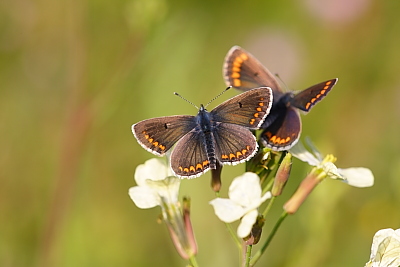
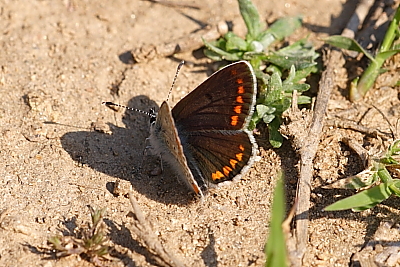
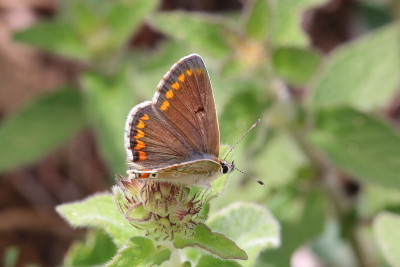
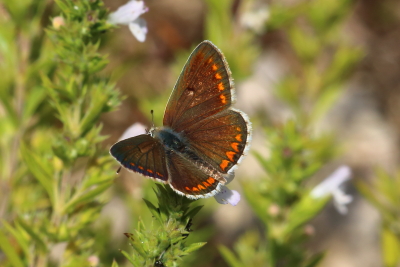
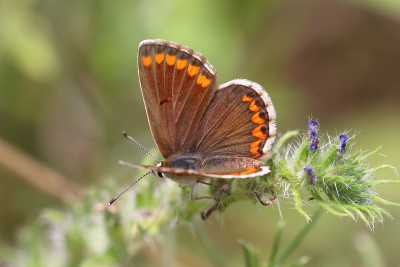
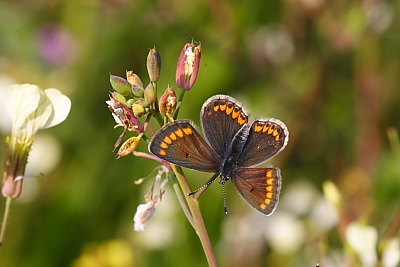
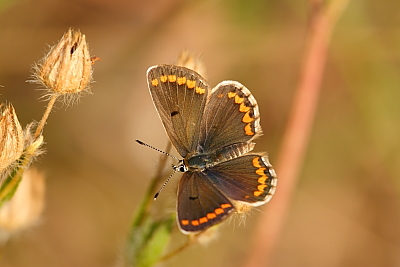
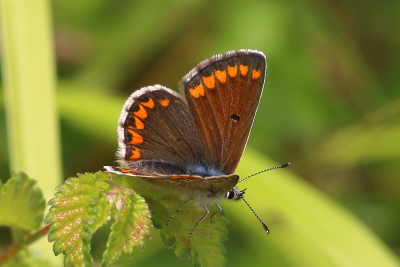
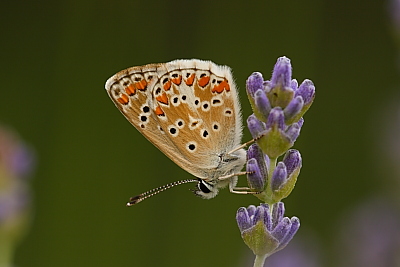
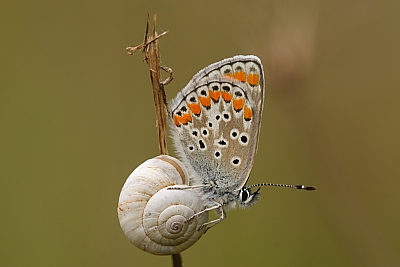
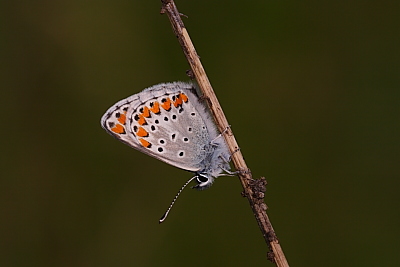
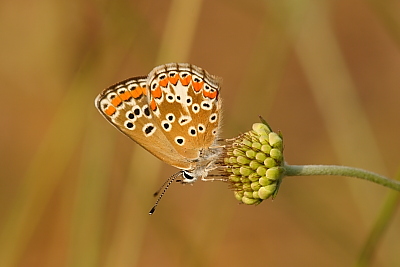
29052_female_Var_1May12
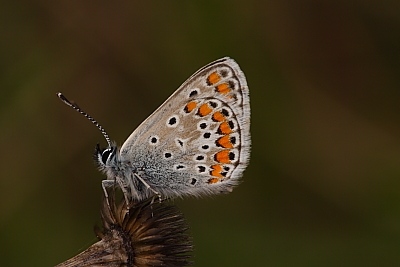
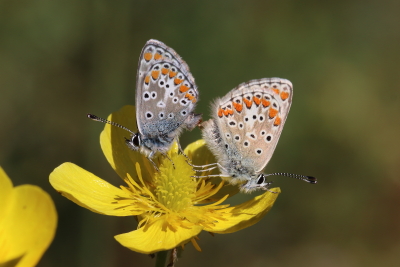
Brown Argus (Aricia agestis)
2025 photographs highlighted in green. Click on any photograph to go to an enlarged picture, or simply scroll down the page.
|
Agestis is quite widespread in the UK and common in France. The very similar Mountain Argus (A. artaxerxes) occurs at higher altitudes and can co-exist with agestis which can also occur at quite high altitudes. Agestis has a full set of upperside orange lunules, especially so in the female, although the male upf lunules are generally smaller and may not quite extend past s4. Artaxerxes has an incomplete set of lunules in both sexes, especially in the male where they may be vestigial or even absent from the upf. Artaxerxes also has a slightly more pointed forewing apex. |
The agestis
underside could be (and often is) confused with the female
Common Blue (Polyommatus icarus) but there is a
key differentiator in the unh spots which is illustrated on the icarus page.
The female uppersides of agestis and icarus (the brown form) are
often very similar, although icarus sometimes has a smattering of basal
blue scales on the forewing which agestis does not have.
From an underside view, it might be considered that the greyer colouring suggests male, while the browner colouring suggests female, this being the normal indication. However, study of the end of the foreleg (the end of the male foreleg is hooked) shows this not to be the case, and the colouring appears to be a function of brood, where the first brood is greyer and has larger orange lunules, while the second brood is browner. In the south of France it is triple brooded, perhaps even a fourth brood as it is on the wing well into October. |
| ref | sex |
observations |
alt. m |
| 19792 | M |
the limited orange lunules of the male in front contrasts well with those of the female behind. |
10 |
| 34433 | M | a male, taking salts from the ground. | 20 |
| 43609 | M | a male, with almost a full set of lunules. | 560 |
| 51969 | M | a male, with a rather weak set of orange lunules, especially on the upf where they only reach s4. | 680 |
| 51103 | F | a female with a very strong set of orange lunules to s6. | 60 |
| 19817 | F |
a female, showing a complete set of strong orange lunules. |
10 |
| 7704 | F |
a female based on body shape, and the upperside of 7696. The upf lunules extend to s6 but are not especially strong. |
140 |
| 52064 | F | a fresh female with a typically strong set of orange lunules on both wings. It was also noticeably large in the field. | 220 |
| 16419 | M |
a second-brood, possibly could be considered to be a female based on the strong warm brown ground colour of the unh, but the colouring may not be a reliable indicator of sex for Aricia species as it would be for, e.g., Polyommatus species. On studying the magnified image, the end of the foreleg appears to be hooked, which confirms that this is a male. The forewing apex is slightly pointed, leaving open the possibility that 16419 is artaxerxes. |
920 |
| 14842 | F | a first-brood, based on the extensive orange lunules. Possibly a male, if the greyness of the unh ground colour is any sort of reliable indication. However, on studying the magnified image, the end of the foreleg appears to be articulated and identical to the mid-leg and hind-leg and not hooked, which confirms that this is a female. It was roosting in this position, apparently defying gravity so as not to slip off the snail shell. | 140 |
| 29052 | F | possibly a male, based on the clean grey ground colour. However, on studying the magnified image, the end of the foreleg appears to be articulated and identical to the mid-leg and hind-leg and not hooked, which confirms that this is a female. | 210 |
| 7696 | F |
a female with nice clean brown ground colour and a complete set of strong orange lunules on the unf extending to s6. The hindwing anal angle hints at male, though. 7704 is the upperside, which clearly confirms female. |
140 |
| 31791 | F | a female, I believe. The unh post-discal spot in s6 is vestigial but in the place one would expect for agestis, thus precluding the possibility that it could be icarus. | 680 |
| 40115 | PAIR | a mating pair, showing the colour contrast between the greyer male on the left and the larger, browner female on the right. | 20 |